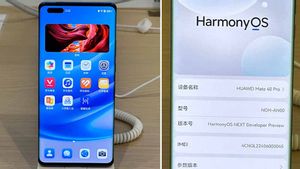JAKARTA - Nokia presents the Nokia Technology Strategy 2030, which identifies new trends and technologies that will form technology, network and the world for the next seven years.
Nishant Batra, Chief Strategy and Technology Officer, Nokia said that the Nokia Technology Strategy 2030 was present in direct response to the development of cutting-edge technology over the past decade.
"One thing is certain, radical changes are needed now to develop networks to answer challenges in the future and beyond," Batra said further.
Nokia hopes that the strategy they provide will revive opportunities for innovation, sustainability, productivity, and collaboration, which can only be activated by exponential network forces.
According to a Global Network Traffic 2030 report, network traffic is growing and will increase dramatically in the decade, due to new trends such as artificial intelligence (AI), machine learning (ML), extended reality (XR), digital twin, automation, and the availability of billions of devices.
"In 2030, the rate of technological developments we see today will significantly increase network traffic," said Jerry Caron, Global Head of Research & Analysis, GlobalData Technology.
SEE ALSO:
Caron added, Nokia Technology Strategy 2030, with its emphasis on effective use of AI, cloud, connectivity, and API economy, is the type of framework that service providers and companies need to implement.
In the Global Network Traffic 2030 report, Nokia projects that the demand for global traffic data is expected to reach between 2,443 to 3,109 exabytes (EB) per month by 2030.
In order for the network to support increasing demand in the future, Nokia said that the network must be more cognitive and automated by using AI and ML, as well as meeting the transformative needs and operational models of organizations and consumers.
The service provider's industry needs to transform from a vertically integrated traditional structure, to a more horizontal and API-driven future, which is sustainable, simple, measurable, automated, and offers more flexible services," he concluded.
The English, Chinese, Japanese, Arabic, and French versions are automatically generated by the AI. So there may still be inaccuracies in translating, please always see Indonesian as our main language. (system supported by DigitalSiber.id)
















